Matsuyama Castle was originally conceived as a stronghold for warlords. However, by the time its construction was completed after a quarter of a century, the Tokugawa regime had ushered in an era of peace across Japan. Over the course of 400 years, the castle’s history has been marked by a cycle of destruction, reconstruction, and renewal due to its wooden structure.
Historical Overview of Matsuyama Castle
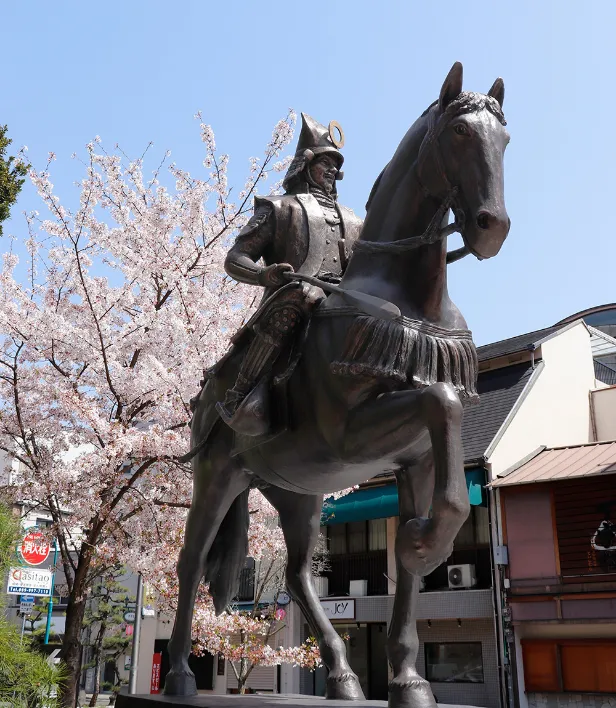
Founded by Kato Yoshiaki, Matsuyama Castle’s origins trace back to his rise as a feudal lord, capable of sustaining 200,000 koku (rice yields) after the Battle of Sekigahara. Feeling the need for a new stronghold befitting his status, Yoshiaki chose to construct a castle in Katsuyama in January, 1602, situated at the heart of the Matsuyama Plain, surpassing his previous residence at Masaki Castle (Masaki-cho, Ehime). In 1603, the area formerly known as Katsuyama was renamed Matsuyama. Construction of the castle spanned approximately a quarter of a century. However, in 1627, before its completion, Yoshiaki was transferred to Aizu, a domain capable of sustaining 400,000 koku (rice yields).
Gamo Tadatomo, who came from Dewa Kaminoyama after being placed in charge of the castle, took over the construction but tragically passed away while traveling for official duties in 1634, marking the end of the Gamo lineage. Following the rule of Kato Yasuoki and other lords of the Ozu domain, Matsudaira Sadayuki, nephew of Tokugawa Ieyasu, arrived from Ise Kuwana in 1635, with resources to support 150,000 koku (rice yields). The Matsudaira family continued to govern for 14 generations until the Meiji Restoration.
History
Edo Period
- 1601
- Permission granted to build Matsuyama Castle.
- 1602
- Kato Yoshiaki appoints Adachi Shigenobu as construction supervisor and begins construction.
- 1603
- Yoshiaki relocates to Matsuyama Castle from Masaki Castle.
- 1627
- Yoshiaki is transferred to Aizu with 400,000 koku (rice yields)
- Gamo Ujisato’s grandson, Tadatomo assumes control, coming from Dewa Kaminoyama.
- The Ninomaru is completed.
- 1634
- Tadatomo dies suddenly, leaving no heir.
- Kato Yasuoki and other lords of the Ozu domain take over temporary stewardship of Matsuyama Castle.
- 1635
- Matsudaira Sadayuki, nephew of Tokugawa Ieyasu, assumes control from Ise Kuwana.
- 1642
- Sadayuki reconstructs the Tenshu (main tower) into a three-story structure.
- 1687
- The Sannomaru goten is completed.
- Afterward, the Sannomaru serves as the residence of the feudal lord, while the Ninomaru becomes the home of his legitimate heir.
- 1784
- Lightning destroys the Tenshu (main tower).
- 1820
- Reconstruction of the Tenshu (main tower) begins but is abandoned.
- 1828
- Meikyokan school is founded.
- 1847
- Reconstruction of the Tenshu (main tower) begins again.
- 1854
- Completion of the Tenshu (main tower) (currently existing).
- 1868
- Tosa domain soldiers seize Matsuyama Castle; domain declared enemy of the Royal Court.
Meiji Period
- 1868
- Matsudaira returns to old name, Hisamatsu.
- 1869
- Land and people return to Royal Court.
- Matsudaira Katsushige was appointed governor of the Matsuyama domain and established his domain office in the Sannomaru.
- 1870
- Katsushige’s residence was moved to the Ninomaru due to destruction of the Sannomaru by fire.
- 1872
- Ninomaru destroyed by fire.
- 1873
- Matsuyama Castle abandoned due to the issuance of the Castle Dissolution Edict.
- 1874
- Matsuyama Castle opened to public as Shurakuen Park. (Closed in 1886.)
- 1910
- Matsuyama Castle reopened as Matsuyama Park.
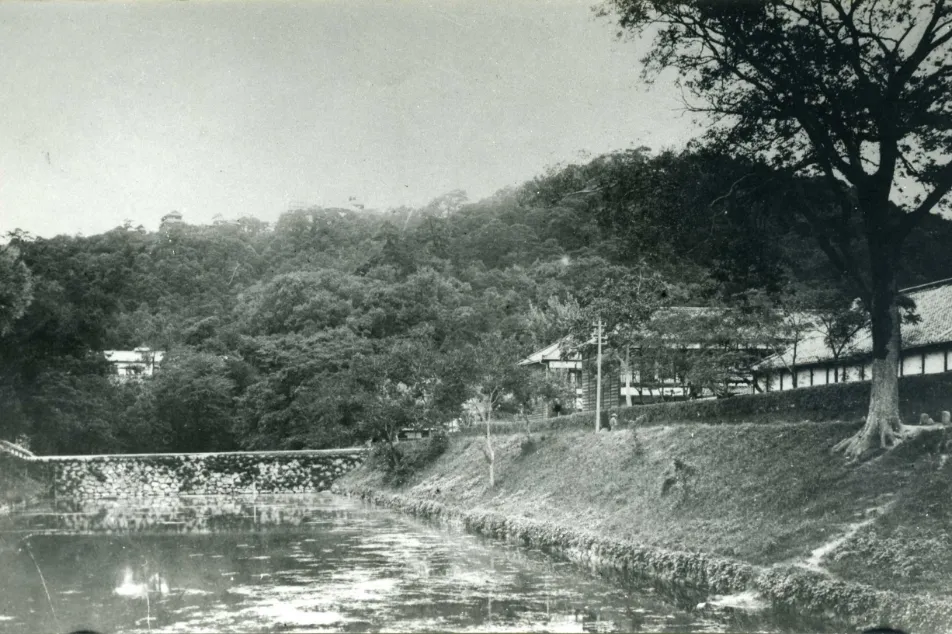
- 1911
- Paths to the castle, Kenchoura, and Komachiguchi, opened.
Taisho Period
- 1923
- Castle donated to Matsuyama City by Count Hisamatsu Sadakoto.
Showa Period
- 1933
- Ko-tenshu (small tower), Minamisumi-yagura Turret, Kitasumi-yagura Turret, Tamon-yagura Turret, Jikken Corridor, and other buildings destroyed by fire caused by arson.
- 1935
- 35 buildings designated as national treasures (former national treasures) under the National Treasures Preservation Act.
- 1945
- Inui-mon Gate, Taiko-yagura Turret (Drum Turret), Tenjin-yagura Turret destroyed by fire due to war.
- 1948
- Matsuyama Park renamed Shiroyama Park, encompassing the Ninomaru and Sannomaru (Horinouchi) areas, and transformed into a public park.
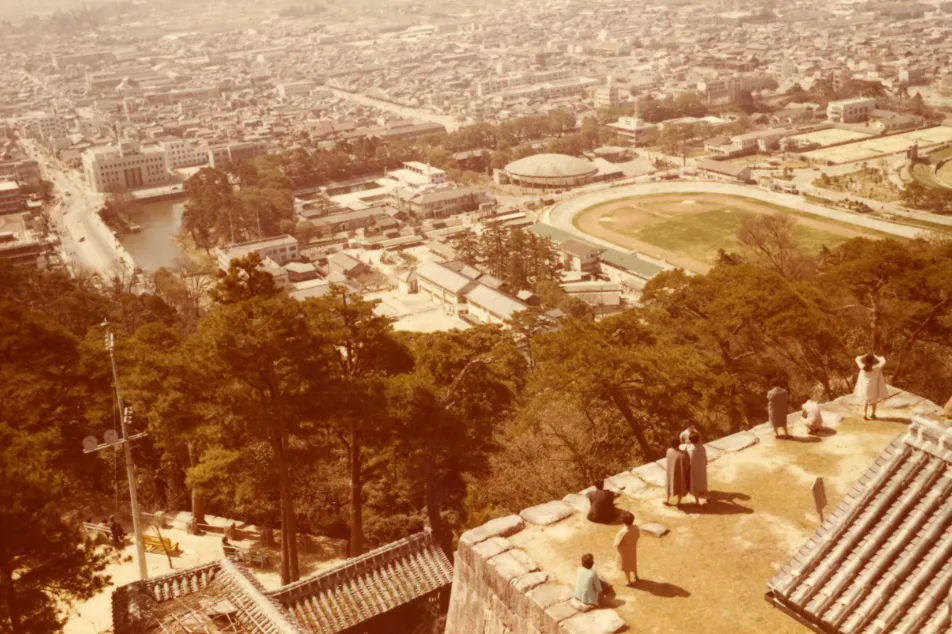
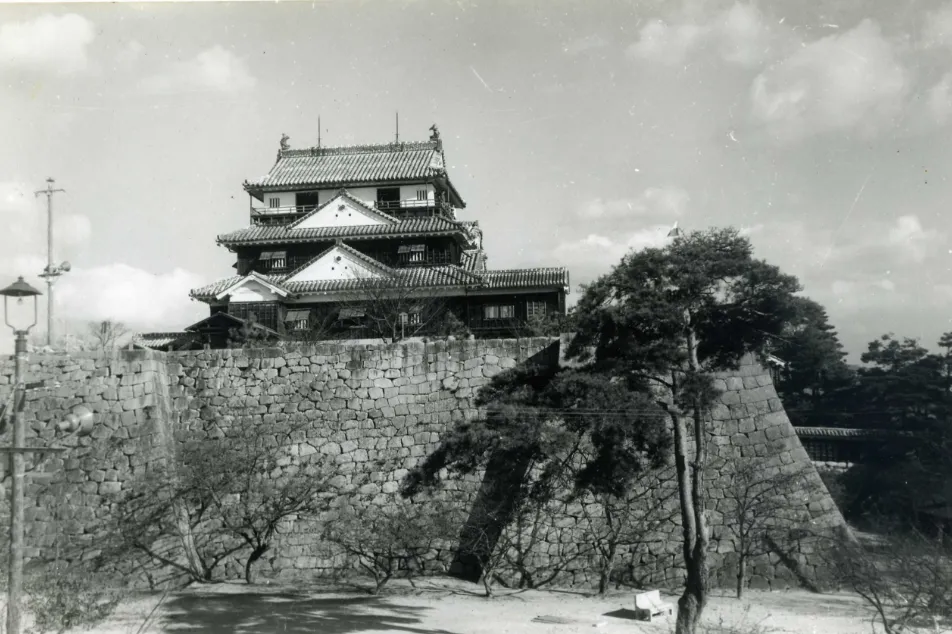
Photo: Owned by Matsuyama City Board of Education
Successive Lords of the Castle and Their Family Crests
The Kato, Gamo, and Hisamatsu-Matsudaira families were former rulers of the Matsuyama domain. Inside and outside Matsuyama Castle, these three families utilized four distinct family crests. Can you spot them all?
Kato Family - Janome (snake’s eye pattern)

Janome (bull’s eye pattern)
The family crest utilized by Kato Yoshiaki, the inaugural lord of Matsuyama Castle. Legend suggests it symbolizes a snake’s eye and a string coiled around a bowstring.
Gamo Family - Hidarimitsudomoe (swirling comma pattern)

Hidarimitsudomoe (swirling comma pattern)
The family crest of Gamo Tadatomo, the second lord of the castle. Traditionally, it is associated with swirling water.
Matsudaira Family - Mitsuba Aoi (three mallow leaves)

Mitsuba Aoi (three mallow leaves)
The Hisamatsu-Matsudaira family adopted two family crests during the reign of Matsudaira Sadayuki, the third lord of the castle. The “Mitsuba Aoi” is a distinctive family crest also used by the Tokugawa clan. As Sadakatsu, Sadayuki’s father, was Ieyasu’s half-brother, he inherited both the Matsudaira family name and the Mitsuba Aoi crest. Notably, Matsuyama Castle stands as the sole historical castle among the twelve with a Tenshu (main tower) adorned with this family crest on its roof tiles.
Hisamatsu Family - Hoshiumebachi (plum/star pattern)

Hoshiumebachi (plum/star pattern)
The “Hoshiumebachi” is the family crest of the Hisamatsu family, formerly known as Matsudaira Sadakatsu (father of Sadayuki) before adopting the Matsudaira family name. It is derived from the lineage tracing back to Sugawara no Michizane, a distant ancestor of the Hisamatsu family.
People associated with Matsuyama Castle
Kato Yoshiaki
1563 - 1631
Born in 1563 in Nagara-go, Hazu-gun, Mikawa Province (present-day Nishio City, Aichi).
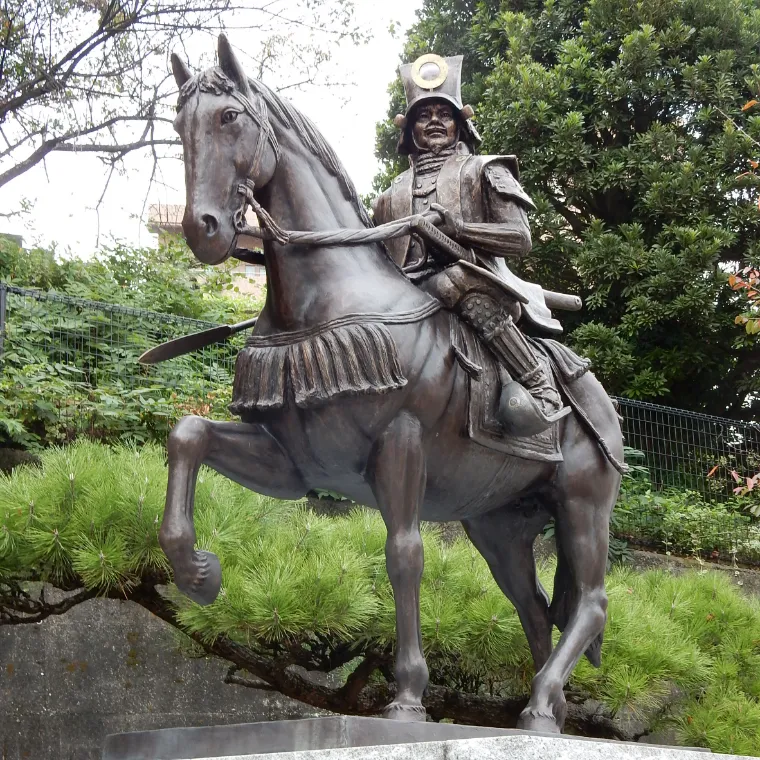
At the age of 40, Kato Yoshiaki embarked on the construction of Matsuyama Castle alongside his vassal Adachi Shigenobu, thus becoming its inaugural lord.
In 1583, he played a pivotal role in the Battle of Shizugatake, fighting as a loyal vassal of Hashiba Hideyoshi against Shibata Katsuie. Renowned as one of the Seven Spears of Shizugatake, he gained fame for being the first to charge into battle.
Kato Yoshiaki’s early life is marked by tales of humble beginnings. As a youth, he reportedly worked as a servant for a horse trader. During one encounter with Hideyoshi’s vassal, Kato Kageyasu, he demonstrated exceptional horsemanship by subduing a rampaging horse effortlessly. Impressed, Kageyasu relayed the incident to Hideyoshi, who was equally impressed. In recognition of his talents, Magoroku was adopted by Kato Kageyasu on Hideyoshi’s orders, assuming the Kato surname and adopting the name Yoshiaki.
Hisamatsu Sadakoto
1867 - 1943
At the age of five, Sadakoto was adopted by Matsudaira Sadaaki and assumed leadership of the Hisamatsu family.
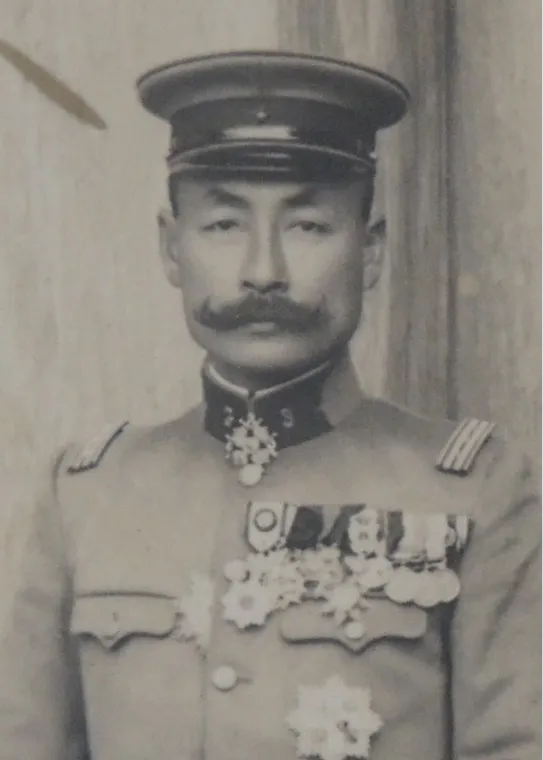
(Sourced from The Shiki Museum)
Sadakoto later bestowed Matsuyama Castle, which the government had divested itself of, to the city of Matsuyama, along with a maintenance fund of 40,000 yen (equivalent to approximately 400 million yen today).
Guided by the principle that “what benefits the people benefits the nation,” his grandfather, Matsudaira Katsushige, sought to rehabilitate Sadaaki’s reputation from being deemed an adversary of the Royal Court. He generously contributed funds to establish a school beneath Matsuyama Castle in Sadakoto’s honor. Raised with these values, Sadakoto dedicated himself to the welfare of the people. He spearheaded agricultural initiatives, laying the groundwork for fruit tree cultivation, and established the Tokiwakai to support young scholars in Tokyo until his passing in 1943.
In 1922, he commissioned the construction of Bansuiso, a villa now designated as a National Important Cultural Property.
